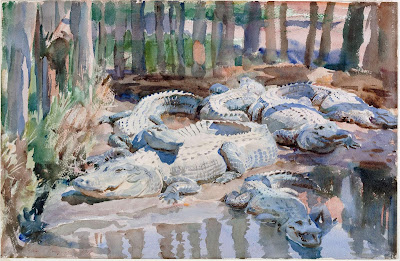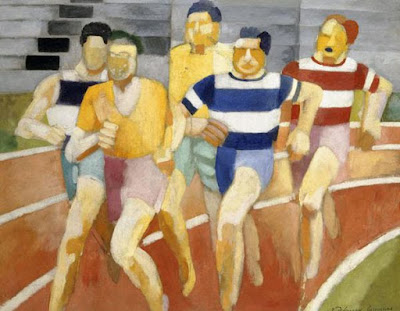Jackson Pollock, Blue Poles

Today I give you a new challenge, but an interesting one. Jackson Pollock (1912-1956) was difficult to understand in 1952, when he completed this painting and art novices still have trouble understanding. It was originally titled, Number 11 and sometimes the year completed was added to the title. Later it simply became known as Blue Poles, however many art critics believe, as I do, that this title does a disservice, because to much attention is drawn to the major lines and not to the work as a whole. It is an enamel and aluminum paint with glass on canvas, measuring 83.5" x 192.5" or almost 7 feet tall by over 16 feet long, so huge! It is part of the permanent collection of the National Gallery of Australia, in Canberra. They purchased it in 1973 for 1.3 million, today its value ranges from 100 - 300 million. As most people know, Pollock was the first "action" painter. He laid the canvas on the floor and carefully poured, spattered, dripped. In the



